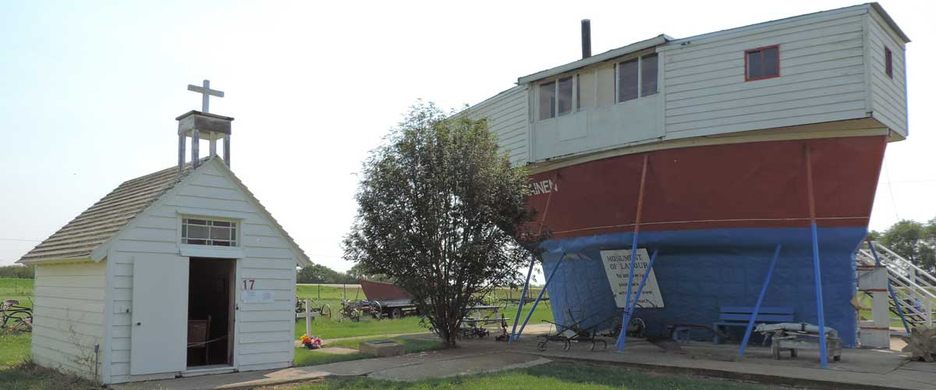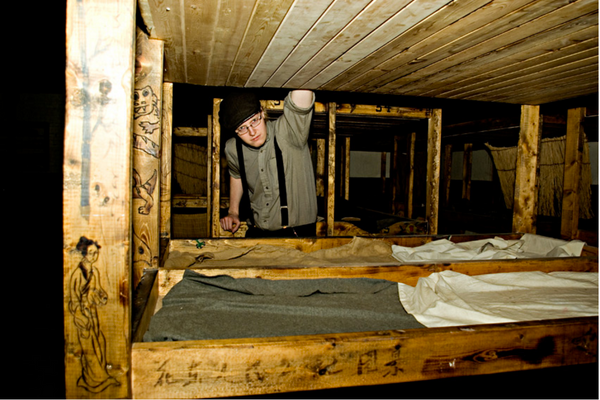Tom Sukanen's Prairie Ship
A broken man's homemade, seaworthy ship rests in the middle of the Canadian prairie.
Born in 1878 on a Finnish atoll to a family of fishermen and shipbuilders, Tom Sukanen (birthname Tomi Jaanus Alankola) sailed to America at the age of 20 only to end up in the landlocked state of Minnesota. There he married a young Finnish woman, and somewhat dispassionately settled into a life of farming.
Together they had a few children, three daughters and a son, before their lives took a bizarre turn in 1911. Sukanen got word that his brother had begun homesteading in the Macrorie-Birsay area of Saskatchewan, so he abandoned his new family in favor of walking more than 600 miles on foot to reunite with his blood-kin.
While up north, he managed to establish a new home for his wife and children near his brother, even saving up a modest nest egg to bring them to Canada. This process took 11 years.
Upon returning to fetch his family, Sukanen found that not only had his love died in a flu epidemic during his absence, but their children had been separated from one another, placed in foster homes, and his old farm lay in ruin. After tracking down his only son, the two made for the Canadian border only for the boy to be rejected and sent back to his foster home.
Heartbroken and alone, Sukanen returned to Saskatchewan. First, he built himself a rowboat and headed for the Hudson where he found work aboard a freighter that took him to Finland and back. This voyage would set his heart on returning to his homeland by whatever means necessary.
Much to the confusion and outrage of his neighbors, at the height of the Great Depression Sukanen spent six years pouring every cent of his savings into building a seaworthy vessel in the middle of the Canadian prairie. Named the Sontiainen, the ship was made from a combination of iron, galvanized steel, and double-planed strong oak. The keel was sealed with horse blood in keeping with Finnish tradition.
The last step involved towing the ship 17 miles away to the South Saskatchewan River, but the only man in town capable of helping flatly refused to do so. Shortly thereafter, Sukanen awoke to discover vandals had stripped the Sontiainen’s keel and hull of its metal while he’d been fast asleep in a cabin above. Completely broken, Sukanen made no protest when he was taken to an insane asylum, where he remained until his death in 1943— the year the drought eased enough for the waters to reach the Sontiainen’s “mooring.” (Of course, Sukanen may indeed have been mentally ill. He apparently attempted to patent wife-beating implements.)
The Sontiainen stayed put, as it was destined to become a symbol for those who dream and attempt the seemingly impossible.
In 1977, after undergoing significant restoration thanks to the efforts of several local benefactors, the Sontiainen was moved to Moose Jaw’s extant Pioneer Village Museum, whose name was later changed to foreground the vessel’s presence—a testament to its inspirational power. Sukanen’s remains were also relocated to a small chapel beside his ship, in hopes that he may finally rest in peace.
Community Contributors
Edited by
The Atlas Obscura Podcast is Back!


















Follow us on Twitter to get the latest on the world's hidden wonders.
Like us on Facebook to get the latest on the world's hidden wonders.
Follow us on Twitter Like us on Facebook